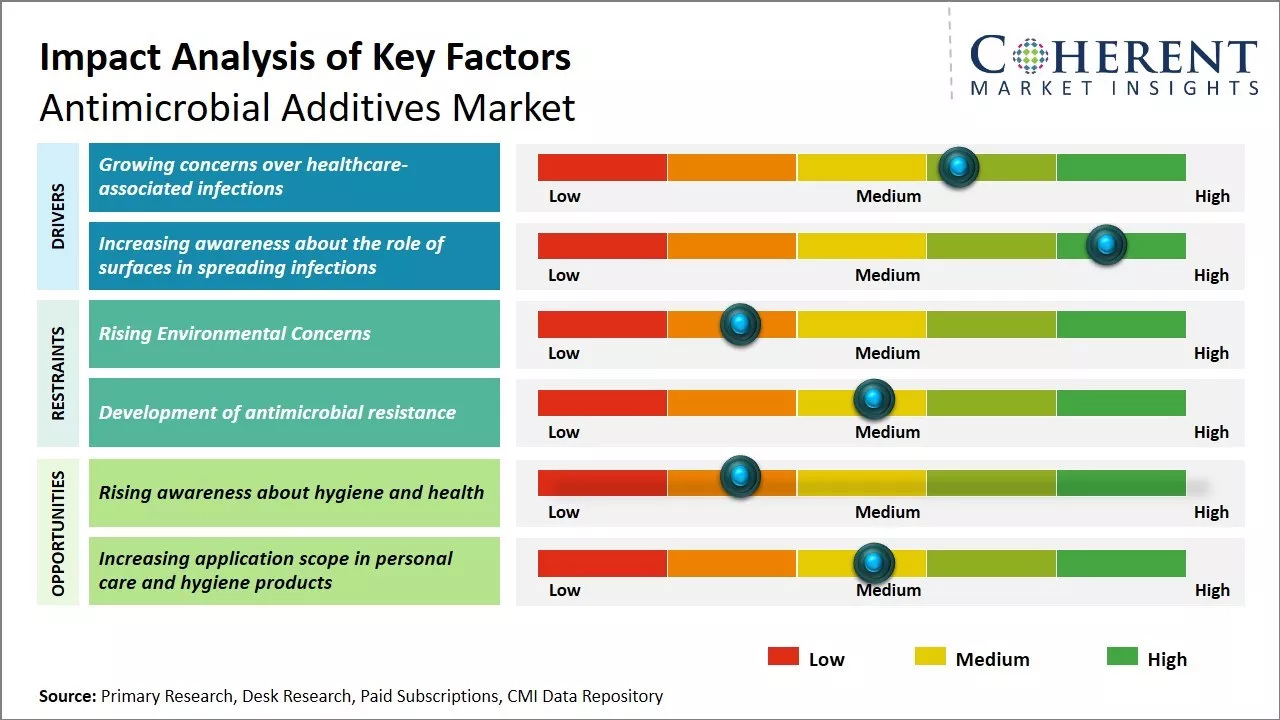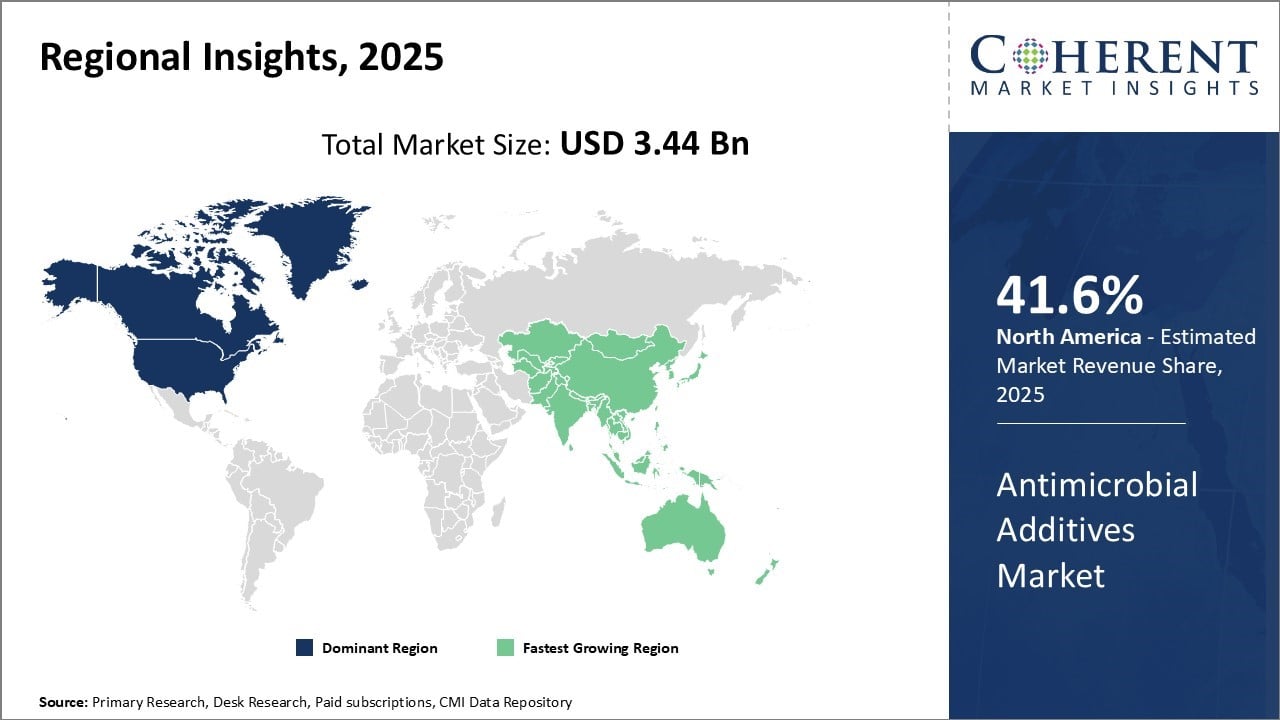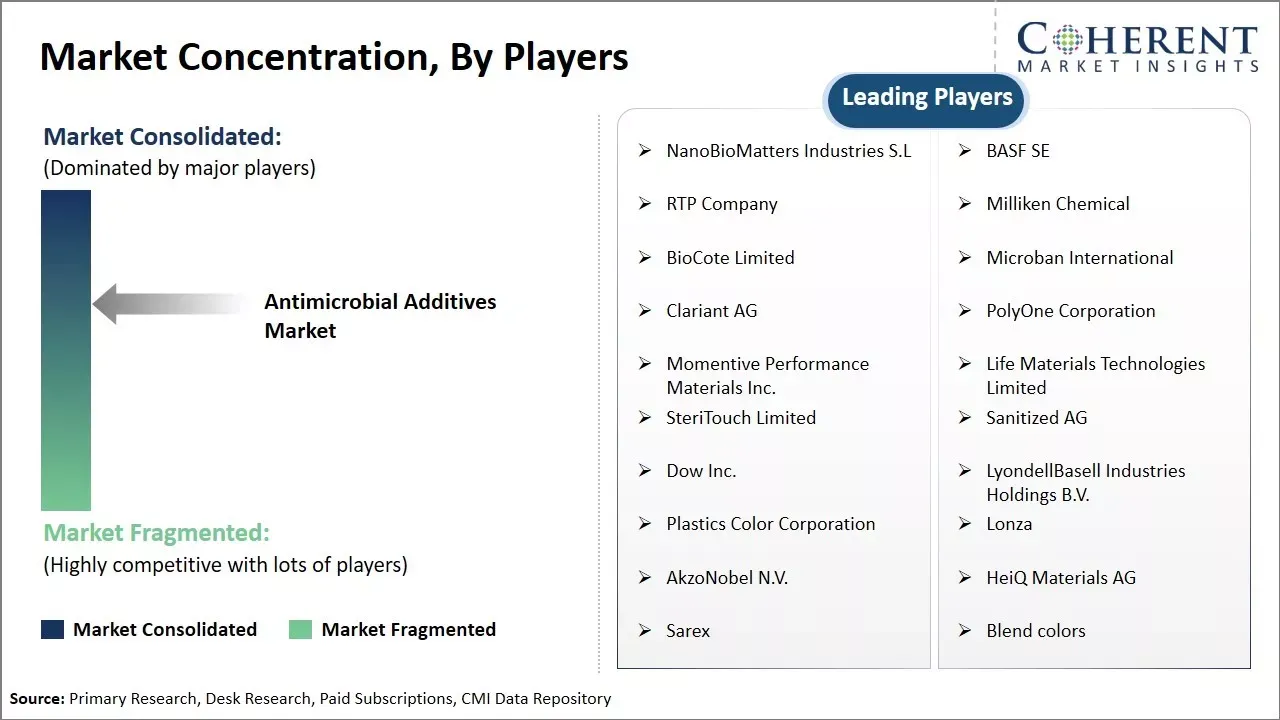The antimicrobial additives market is estimated to be valued at USD 3.44 Bn in 2025 and is expected to reach USD 5.50 Bn by 2032, growing at a compound annual growth rate (CAGR) of 6.9% from 2025 to 2032.

To learn more about this report, Download Free Sample
The market is expected to witness significant growth during the forecast period. The growing awareness about health and hygiene is expected to drive the antimicrobial additives market demand. The regulatory framework is also supportive with regards to use of such additives in various industrial and consumer applications. Major industry players are investing in R&D to develop innovative products in order to capitalize on the lucrative growth opportunities offered by this market. Several product launches catering to different application segments are expected to further support the market expansion.
|
Current Events |
Description and its impact |
|
Regulatory Policy Shifts |
|
|
Geopolitical Supply Chain Disruptions |
|
|
Global Health Initiatives |
|
Uncover macros and micros vetted on 75+ parameters: Get instant access to report
Increasing awareness of infection control and hygiene, especially in commercial, residential, and healthcare environments, is boosting demand for antimicrobial additives in paints and coatings. A surge in construction and renovation projects is encouraging the use of antimicrobial coatings to enhance surface protection and indoor air quality. Advancements in technology, such as nano-based and controlled-release additives, are improving the effectiveness and longevity of these coatings. For instance, PPG's JOHNSTONE'S brand launched Anti-Bacterial Matte paint, designed to be applied on walls throughout the home to actively prevent bacterial growth.
The urgent need to prevent healthcare-associated infections and combat antibiotic resistance is propelling growth in the healthcare segment of the antimicrobial additives market. Hospitals and clinics are increasingly adopting antimicrobial-treated equipment, surfaces, and packaging to enhance patient safety and reduce infection risks. The rising use of single-use medical supplies such as instruments, gloves, and gowns further boosts demand. Additionally, stringent hygiene regulations and the global expansion of healthcare infrastructure are prompting both developed and emerging countries to adopt advanced antimicrobial technologies. For instance, in October 2024, Unigloves, a leading hand protection expert, partnered with KluraLabs, a pioneer in antimicrobial solutions, to develop the CrossGuard antimicrobial nitrile glove—the first of its kind to eliminate 99.99% of specific bacteria within just 60 seconds. This is further accelerating the antimicrobial additives market demand.
The urgent need to prevent healthcare-associated infections and combat antibiotic resistance is propelling growth in the healthcare segment of the antimicrobial additives market. Hospitals and clinics are increasingly adopting antimicrobial-treated equipment, surfaces, and packaging to enhance patient safety and reduce infection risks. The rising use of single-use medical supplies such as instruments, gloves, and gowns further boosts demand. Additionally, stringent hygiene regulations and the global expansion of healthcare infrastructure are prompting both developed and emerging countries to adopt advanced antimicrobial technologies. For instance, in October 2024, Unigloves, a leading hand protection expert, partnered with KluraLabs, a pioneer in antimicrobial solutions, to develop the CrossGuard antimicrobial nitrile glove—the first of its kind to eliminate 99.99% of specific bacteria within just 60 seconds. This is further accelerating the antimicrobial additives market demand.

To learn more about this report, Download Free Sample
North America dominates the antimicrobial additives market due to strong demand across consumer products, healthcare, food packaging, and construction sectors. The region’s leadership stems from its advanced healthcare infrastructure, strict FDA and EPA regulations, and growing awareness of hygiene and infection control. Manufacturers continue to prefer inorganic additives, especially silver and copper, for their proven effectiveness and durability. At the same time, ongoing innovations in nano- and bio-based technologies are driving the development of next-generation antimicrobial solutions in the region. For instance, Mitel, a Canadian leader in business communications, introduced the Mitel 6920t and 6930t IP phones, which are made of plastic and protected with BioCote® antimicrobial technology.
Significant investments in healthcare infrastructure across Asia Pacific are driving the widespread use of antimicrobial compounds in medical devices, hospital furnishings, and surfaces. Growing awareness of infection control, especially after the pandemic, is prompting healthcare providers to adopt these additives to reduce microbial contamination and improve patient safety. Meanwhile, the rapid growth of packaged foods, ready-to-eat food, and agricultural films is accelerating the demand for antimicrobial coatings in food packaging and storage applications to enhance hygiene and shelf life.
American manufacturers are incorporating advanced antimicrobial additives like silver nanoparticles, copper biocides, and plant-based organic compounds. These innovations enhance safety, improve cost-efficiency, and require lower dosages. Growing consumer demand for eco-friendly alternatives is driving their use in household products, medical devices, pharmaceuticals, and food packaging. Concerns over harmful substances such as triclosan, tin, and arsenic are accelerating the shift toward greener solutions. For instance, in May 2022, antimicrobial goods like sanitizers and disinfectants beared the new, updated Design for the Environment (DfE) mark from the U.S. Environmental Protection Agency (EPA).
Rising investments in hospital infrastructure and increased focus on infection control after the pandemic are shaping China’s antimicrobial additives market. Hospitals are actively adopting treated medical equipment, furniture, and surfaces to minimize microbial contamination and protect patients. Meanwhile, growing consumer demand for safer food and extended shelf life is driving the use of antimicrobial coatings in packaging. These coatings are widely applied in storage containers, agricultural films, and ready-to-eat meals to reduce spoilage and enhance overall food safety.

To learn more about this report, Download Free Sample
| Report Coverage | Details | ||
|---|---|---|---|
| Base Year: | 2024 | Market Size in 2025: | USD 3.44 Bn |
| Historical Data for: | 2020 To 2024 | Forecast Period: | 2025 To 2032 |
| Forecast Period 2025 to 2032 CAGR: | 6.9% | 2032 Value Projection: | USD 5.50 Bn |
| Geographies covered: |
|
||
| Segments covered: |
|
||
| Companies covered: |
NanoBioMatters Industries S.L, BASF SE, RTP Company, Milliken Chemical, BioCote Limited, Microban International, Clariant AG, PolyOne Corporation, Momentive Performance Materials Inc., Life Materials Technologies Limited, SteriTouch Limited, Sanitized AG, Dow Inc., LyondellBasell Industries Holdings B.V., Plastics Color Corporation, Lonza, AkzoNobel N.V., HeiQ Materials AG, Sarex, and Blend colors |
||
| Growth Drivers: |
|
||
| Restraints & Challenges: |
|
||
Uncover macros and micros vetted on 75+ parameters: Get instant access to report
The antimicrobial additives market is witnessing strong growth across healthcare, food packaging, consumer goods, and construction industries. Post-pandemic hygiene awareness has accelerated the use of antimicrobial agents in surfaces, textiles, coatings, and plastics. Hospitals, schools, restaurants, and public spaces increasingly adopt these solutions to minimize contamination risks. Additionally, industries are embedding additives into products like paints, packaging films, and appliances to meet consumer expectations for cleaner, safer environments and to comply with stricter hygiene regulations.
Innovation is a key trend shaping the antimicrobial additives market. Manufacturers are developing next-generation additives using nanotechnology, controlled-release systems, and bio-based compounds. These technologies enhance efficacy, extend the life of antimicrobial protection, and reduce the amount of active agent required. Smart antimicrobial materials that respond to microbial activity are also gaining traction. These innovations enable high-performance additives suitable for use in critical applications like medical devices, HVAC systems, and food-contact materials, while also supporting sustainability goals.
Rising consumer preference for hygiene-enhancing products offers a major opportunity for antimicrobial additives in personal care, household goods, and textiles. Shoppers increasingly seek items that provide long-lasting protection against bacteria and odors. This creates demand for antimicrobial additives in soaps, packaging, sportswear, kitchenware, and even baby products. Brands that integrate effective yet safe additives can enhance product value, improve market positioning, and meet evolving customer expectations around cleanliness, health, and sustainability.
Share
Share
About Author
Yash Doshi is a Senior Management Consultant. He has 12+ years of experience in conducting research and handling consulting projects across verticals in APAC, EMEA, and the Americas.
He brings strong acumen in helping chemical companies navigate complex challenges and identify growth opportunities. He has deep expertise across the chemicals value chain, including commodity, specialty and fine chemicals, plastics and polymers, and petrochemicals. Yash is a sought-after speaker at industry conferences and contributes to various publications on topics related commodity, specialty and fine chemicals, plastics and polymers, and petrochemicals.
Missing comfort of reading report in your local language? Find your preferred language :
Transform your Strategy with Exclusive Trending Reports :
Frequently Asked Questions
Joining thousands of companies around the world committed to making the Excellent Business Solutions.
View All Our Clients